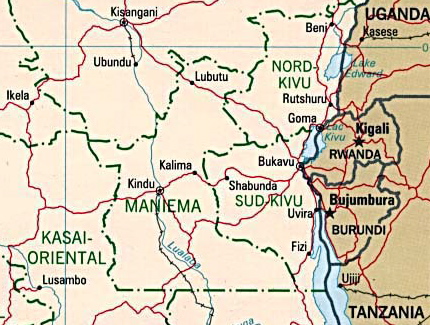An insights paper published by the Stockholm International Peace Research Institute (SIPRI), March 2025.

The paper examines the interplay between climate change and conflict in North and South Kivu. The study highlights how environmental degradation, socio-political vulnerabilities, and armed conflict exacerbate human insecurity and impede peacebuilding efforts in the region. Despite its vast natural resources, the DRC remains one of the poorest and most climate-vulnerable countries globally. Climate change intensifies existing challenges, such as poverty, displacement, and resource scarcity, thereby increasing the risks of intercommunal violence. The paper emphasizes that governance structures and access to land and water play pivotal roles in shaping climate-induced conflicts.
Conflict and climate vulnerability in the Eastern DRC
The region has long suffered from instability due to ethnic tensions, political patronage, resource exploitation, and armed group activity. Climate change exacerbates these tensions by degrading land and water resources, thereby heightening competition over essential resources. The Ruzizi Plain, for instance, has witnessed increased conflicts between farming communities due to water scarcity. Weak state authority further compounds the crisis by limiting local adaptation capacities.
Climate trends and environmental stressors
Eastern DRC experiences significant climate variability, with rising temperatures and shifting rainfall patterns disrupting traditional agricultural cycles. Projections indicate that by 2065, temperatures could increase by up to 2.7°C under high-emission scenarios. Unpredictable precipitation patterns have led to increased droughts and flash floods, which negatively impact food production and heighten humanitarian crises. The degradation of Lake Kivu due to pollution and overexploitation threatens local livelihoods, while deforestation and mining intensify ecological decline.
Climate-related security risks
The study categorizes climate-induced security risks into four pathways:
- Livelihood Deterioration: Declining agricultural yields and disrupted food supply chains lead to heightened grievances and intergroup tensions.
- Displacement and Mobility Changes: Climate disasters, such as floods and droughts, displace thousands, exacerbating competition for resources and increasing tensions between host and displaced communities.
- Armed Group Exploitation: Non-state actors exploit climate-induced hardship by controlling resource-rich areas and using environmental degradation to sustain operations.
- Elite Manipulation: Political and economic elites capitalize on resource scarcity, using instability to consolidate power and perpetuate land disputes.
Gender and youth considerations
Women and youth are disproportionately affected by climate change and conflict. Women bear the brunt of household resource management yet lack land ownership rights, limiting their adaptive capacity. Youth are vulnerable to armed group recruitment due to economic hardships, yet they also play a crucial role in climate action and peacebuilding.
Recommendations
The paper proposes three key policy actions:
- Promote Climate-Resilient Livelihoods: Support sustainable agriculture, reforestation, and alternative income sources to reduce dependence on conflict-prone resources.
- Strengthen Awareness and Capacity Building: Integrate climate security considerations into peacebuilding initiatives, ensuring local actors are equipped to address climate-induced conflicts.
- Develop Institutional Coordination: Establish a platform for collaboration between state and non-state actors to improve governance over climate, peace, and security issues.
The paper concludes that climate change is a critical yet often overlooked factor in the region's ongoing conflict. Addressing climate security risks through integrated, community-driven approaches is essential for achieving lasting peace and stability in eastern DRC.
This article is based on extracts from an insights paper written by Katongo Seyuba, March 2025. To read the full paper, follow the link here.
See below for our coverage on similar topics:
- Imbuing Climate Security with Positive Peace
- EU-UNEP Initiative to Strengthen Food Security and Resilience in Sudan
- Solar Power and Environmental Peacebuilding in South-central Somalia



